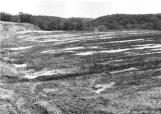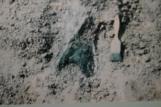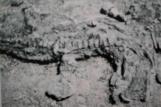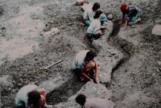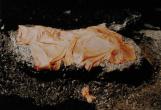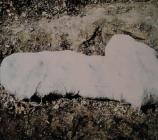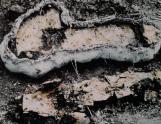1
The Pembina Mountain Clays mining company and Henry Isaak helped to locate and excavate the largest collection of marine vertebrates in Canada.3
Fossil collecting and excavating for the Morden and District Museum (now named the Canadian Fossil Discovery Centre) began in the 1972. It was initiated by Henry Isaak.The mining company Pembina Mountain Clays had been mining the mineral bentonite since 1939 and in 1972 was made aware that the Morden and District Museum wanted to collect the fossil found within the quarries.
This is a picture of one of the 19 quarries mined in the Pembina Hills.
5
Mr. Roy Friesen, the only operator of the large bulldozer, had the ability to tell if he nicked a fossil and alerted museum staff.Mr. Friesen indicated that a couple quarries were in progress providing adequate time for the staff and volunteers to excavate the fossils discovered by the miners.
Once a fossil was located, a team of staff and volunteers would excavate the remains with the use of brushes. Since the shale breaks apart easily the use of brushes is more than adequate.
7
Finding a fossil is a rare occurrence and most often a solitary piece is found. A whole skeleton is an extremely rare event.The possibility of finding an articulated specimen does present itself from time to time and the Canadian Fossil Discovery Centre (formerly the Morden and District Museum) has found many skeletons.
The first step in the excavation process is to identify if there are any other bones connected to or in close proximity to the one discovered.
9
Once the extent of the fossil is known, data is collected from the sight, including co-ordinates, pictures and a description of the specimen and location.The fossil must be removed from the ground and transported to the museum for further study. To excavate a fossil, a trench is dug out around the material to be extracted ensuring the field jacket can be properly applied.
11
Wet paper towels or newspaper is applied directly to the surface of the fossil. This prevents the plaster or field jacket from adhering to the fossil.13
A field jacket consists of burlap (potato sack) cut into wide long strips and dipped into plaster. The strips are wrapped around the fossil and matrix (material surrounding the fossil) creating a hardened cast.The cast or field jacket prevents the fossil from fracturing during transportation.
